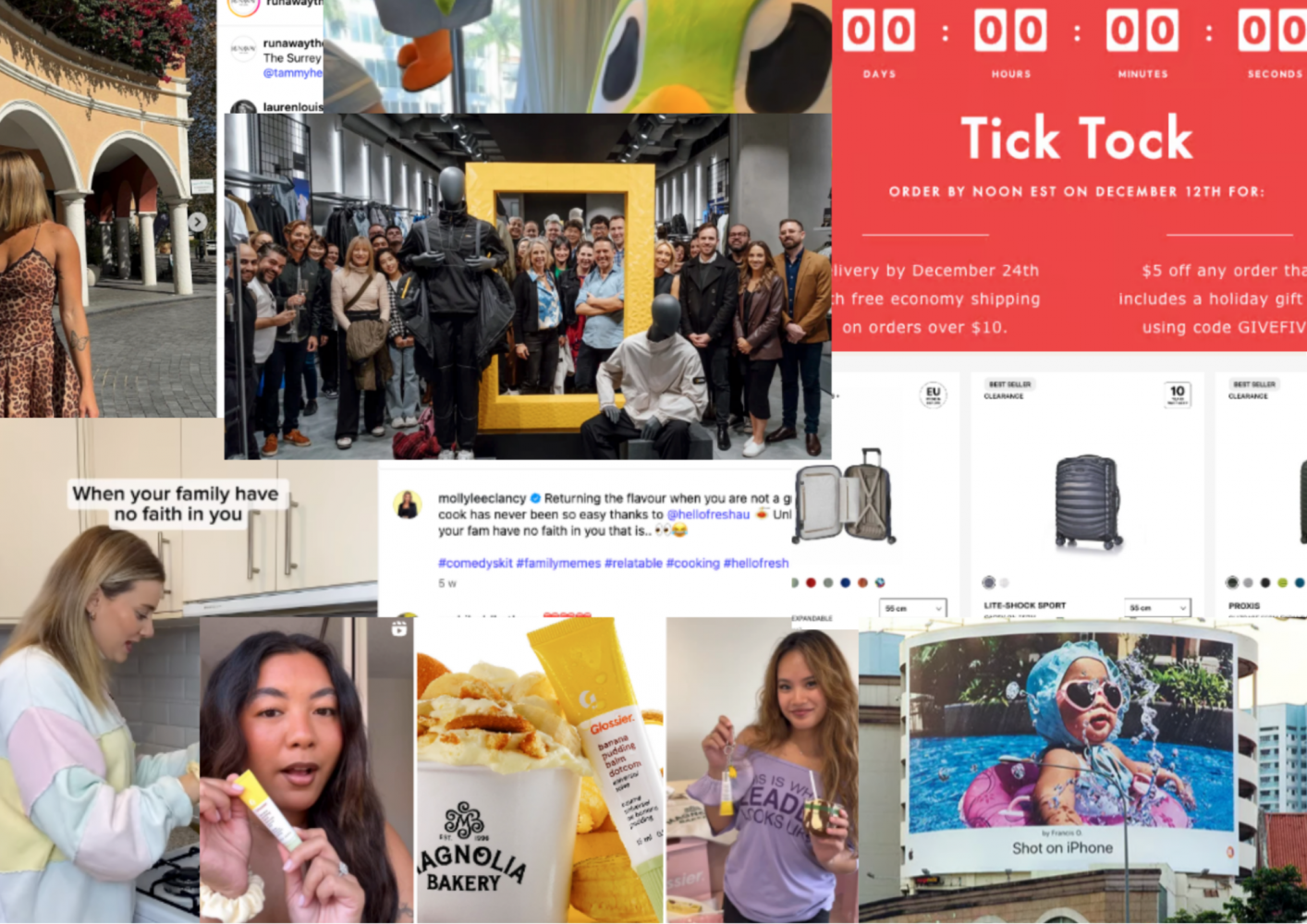
Great marketing isn’t luck—it’s strategy, creativity, and flawless execution.
Digital marketing campaigns are how brands cut through the noise and make meaningful connections with their audiences. But not every campaign hits the mark (remember that Kendall Jenner Pepsi ad?).
That’s why looking at proven digital marketing examples is invaluable. By seeing what has worked, you can take some inspiration for your own campaigns.
This article breaks down 15 standout digital marketing campaigns that actually worked. We’ve pulled from Australia’s top players and global giants, covering social, email, SEO, video, influencer, paid ads, and more.
Let’s dive in.
What is a digital marketing campaign?
At its core, a digital marketing campaign is a carefully planned series of online actions designed to achieve a specific business goal. That goal could be brand awareness, lead generation, or sales.
Campaign types vary widely, but can include social media blasts, SEO content pushes, email sequences, video storytelling, influencer partnerships, paid ad drives, and more.
Want to go deeper? Check out our full guide: What is digital marketing?
15 digital marketing examples: Campaigns that actually worked
Below, you’ll find a mix of global and Australian campaigns—across social media, email, SEO, video, and influencer marketing. We’ve unpacked each one with key insights and takeaways you can apply today.
Social media campaigns
1. Duolingo – Viral TikTok Content
Format: Organic social content
Platform: TikTok
Industry: EdTech
Duolingo’s owl mascot became a TikTok sensation by tapping into Gen Z humour. The brand creates meme-able moments, pop culture riffs, and absolutely unhinged replies in the comments. With no paid push, Duolingo saw a 2000% increase in TikTok followers in under a year and a surge in app downloads.
Why it worked:
Duolingo understood that TikTok isn’t for ads—it’s for entertainment. Their content felt native, not corporate, making viewers more likely to engage with it.
Takeaway:
If you’re targeting Gen Z, your brand voice can’t be boring and you can’t push a hard sell. Lean into the humour, tone, and trends of the platform—not just pushing your product. Think like a creator, not an advertiser. Brands like Coles and Bondi Sands have also jumped on TikTok using relatable content.
2. Runaway The Label – Influencer partnerships

Format: Influencer marketing
Platform: Instagram, TikTok
Industry: Fashion (AUS)
This Sydney-based fashion brand partnered with influencer Tammy Hembrow to launch key collections. Instead of pushing discounts, they focused on aspirational lifestyle content highlighting styling, behind-the-scenes, and social proof. People saw the fashion and they wanted to experience what it was like to be Tammy Hembrow for a day.
Why it worked:
Hembrow’s audience overlapped perfectly with Runaway’s buyer persona: fashion-conscious women aged 18–30.
Takeaway:
Choose influencers whose personal brand aligns with your brand story. Don’t pay too much attention to follower counts, but examine cultural fit instead. Run small campaigns with niche creators first, then scale.
3. Apple – #ShotOniPhone campaign

Image credit: Beehiiv
Format: UGC / Hashtag campaign
Platform: Instagram, Billboard, YouTube
Industry: Tech
Apple turned its customers into brand advocates by showcasing photos taken on iPhones. From Instagram to huge billboards, the campaign celebrated the product’s quality through real-world use, showing how professional iPhone camera photos can be.
Why it worked:
It was social proof at scale and aspirational. People were surprised by the quality of the images, and also wanted to be featured by Apple.
Takeaway:
Run hashtag challenges that make your product the hero. Repurpose real customer content in social and paid—like Frank Green does across Instagram stories.
4. Glossier – Community-driven UGC

Format: User-generated content
Platform: Instagram, Email, Blog
Industry: Beauty
Glossier built its cult following by not looking like a brand. 90% of its growth came from word of mouth and customer content. Glossier regularly reposts user photos, reviews, and testimonials.
Why it worked:
People trusted real users more than studio shoots (and want to have their photos used by Glossier, creating a steady supply of UGC).
Takeaway:
Turn every happy customer into a micro-influencer. Go-To Skincare nails this approach with playful, everyday UGC that feels like a friend’s recommendation.
5. Bez x National Geographic – Experiential social coverage
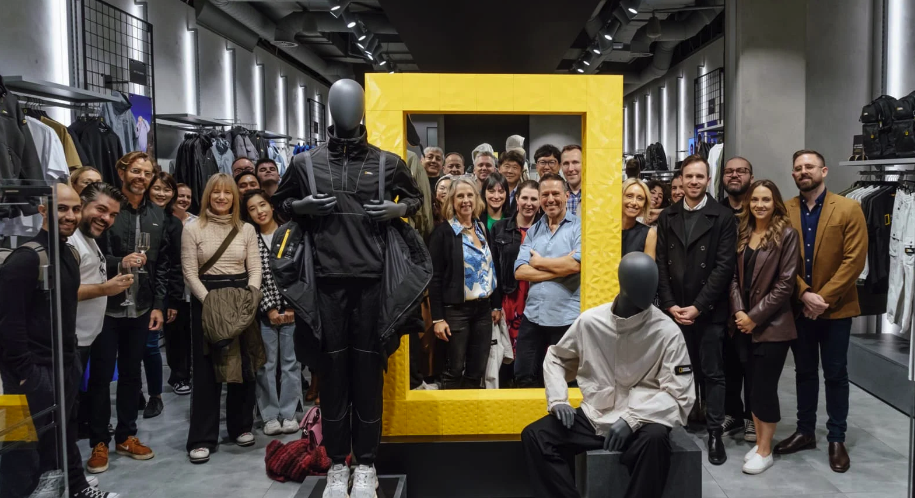
Format: Experiential social campaign
Platform: Instagram, Facebook, In-store
Industry: Retail / Media (AUS)
To launch National Geographic’s concept store in Melbourne Central, Bez ran a content-led campaign focused on real people, real moments, and real emotions—capturing event coverage in real time and turning it into rich social storytelling.
Why it worked:
The campaign extended the event’s lifespan beyond the in-person event, drew foot traffic, and built local buzz.
Takeaway:
Social coverage is more than photos—it’s narrative. Use live moments to tell stories. Combine event footage with trending Reels formats for maximum reach post-launch.
Email & SMS marketing
6. Buoy – Countdown timer email offers
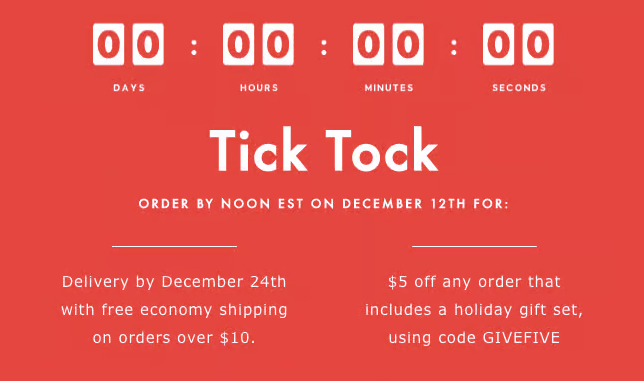
Format: Email with urgency elements
Platform: Klaviyo
Industry: Wellness
Buoy, a hydration brand, used limited-time offers with built-in countdown timers in their emails. They also encouraged customers to forward offers to friends for extra perks.
Why it worked:
Scarcity creates action. Anybody who is on the fence about making a purchase will feel the pressure to buy if they think they might miss out on a good deal.
Takeaway:
Use scarcity ethically. Wellness brands like JSHealth Vitamins often use early-access and VIP launches to build anticipation.
7. Campus Protein – SMS abandoned cart nudges
Format: Personalised SMS
Platform: SMS
Industry: Fitness eComm
Campus Protein used SMS (not email) to remind users about items left behind. These messages were personalised with first names, product details, and discount incentives. Not wanting to have an unread message on their phone screen, open rates exceeded 90%.
Why it worked:
SMS feels more intimate and harder to ignore. And it’s fast.
Takeaway:
Keep it short, human, and timely. One reminder is often enough. Integrate SMS into your Shopify flow with apps like SMSBump or Postscript.
SEO & content marketing
8. Samsonite – SEM-focused product targeting
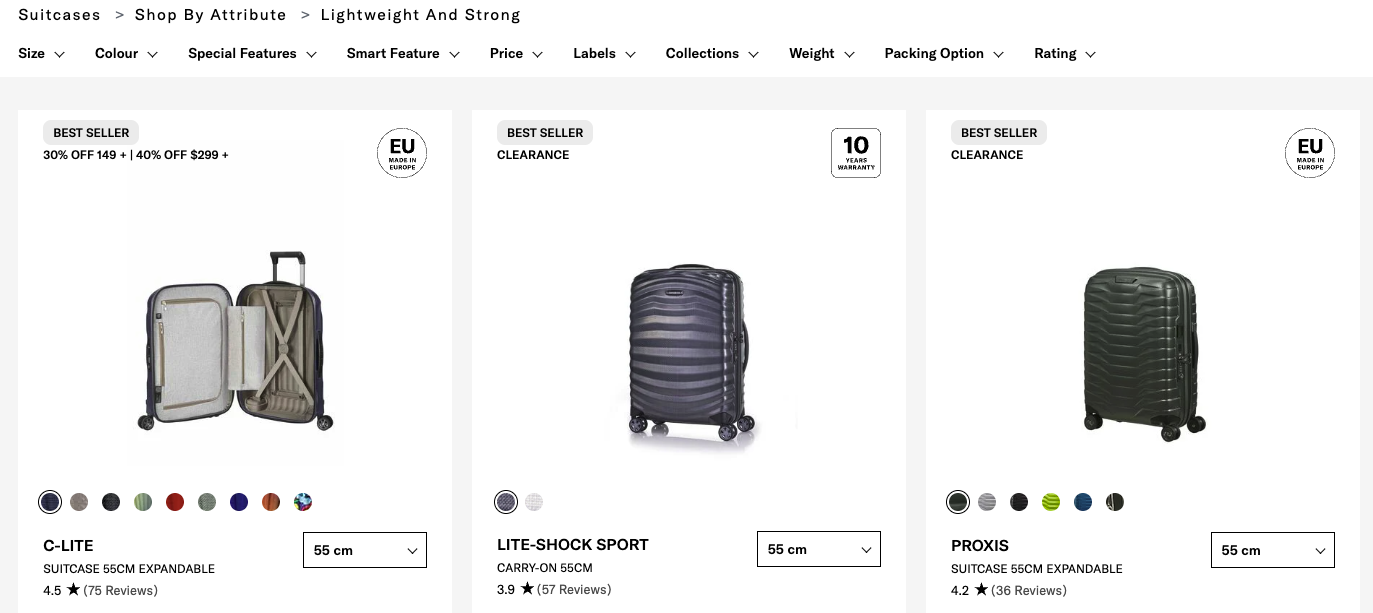
Format: Search Engine Marketing (Google Ads)
Platform: Google
Industry: Travel / Retail
Samsonite created hundreds of ad variations targeting long-tail searches like “lightweight carry-on for business travel” or “best suitcase for overpackers.” High-quality landing pages matched the search intent exactly.
Why it worked:
Samonsite didn’t sell products by targeting “buy suitcase”. They solved problems by using long-form content to answer commonly asked questions.
Takeaway:
Segment your keywords by user intent, not category. Tools like Semrush or Ahrefs can help you find pain-point searches relevant to your niche.
9. Domain – Local SEO strategy
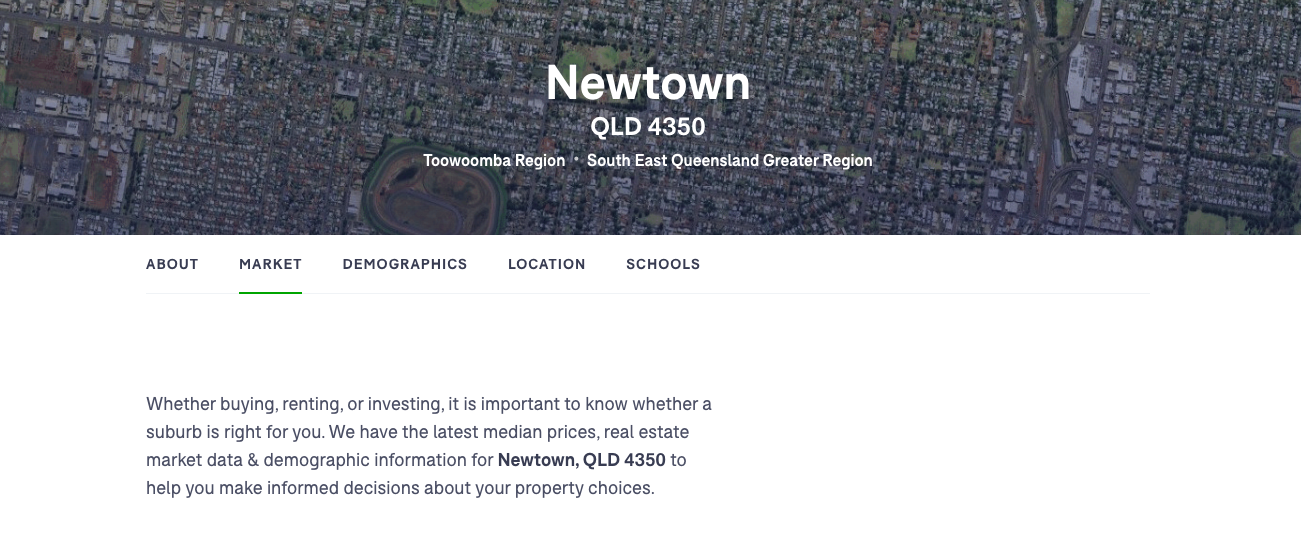
Format: Blog + suburb-specific pages
Platform: CMS with location data integration
Industry: Real Estate (AUS)
Domain publishes hyper-local content like “Median house prices in Newtown” and “Best family suburbs in Perth” to capture location-based property searches.
Why it worked: Property buyers and renters always search by specific locations, making geo-targeted content essential for visibility.
Takeaway: Build out region-specific pages that reflect how Aussies actually search. Add suburbs, postcodes, and regional language to your site content to dominate in local SEO.
Video & branded content
10. Nike – You Can’t Stop Us video
Format: Hero video
Platform: YouTube, TV, Social
Industry: Sportswear
This emotional split-screen video highlighted unity and resilience through athletic performance. It won awards, earned millions of views, and deeply resonated during COVID.
Why it worked:
It wasn’t about shoes. It was about the human spirit, and that resonated much more than a pushy sales ad.
Takeaway:
If you want viral, aim for feelings, not features. Even small brands can use storytelling—try customer interviews or cause-driven content.
11. Tourism Australia – Come and say g’day
Format: Video series + paid media
Platform: YouTube, TV, Programmatic
Industry: Tourism (AUS)
This campaign featured Ruby the Roo and a Hollywood-level CGI adventure, promoting post-COVID travel to international markets.
Why it worked:
High-production value + native Australian charm = global appeal.
Takeaway:
Don’t be afraid to go bold on brand storytelling. Pair hero videos with targeted retargeting ads to nurture cold audiences into bookings.
Influencer & paid campaigns
12. HelloFresh Australia – Influencer collabs

Format: Sponsored content + affiliate links
Platform: YouTube, Instagram
Industry: Meal kits (AUS)
HelloFresh worked with Aussie micro-influencers in fitness, parenting, and food—offering discount codes, free trials, and content guidelines that left space for creative freedom.
Why it worked:
The influencers were trusted, relatable, and non-scripted.
Takeaway:
Don’t control every word—trust creators to tell your story authentically. And use affiliate links or “first box free” deals to track ROI.
13. Frank Body – Micro-influencer magic
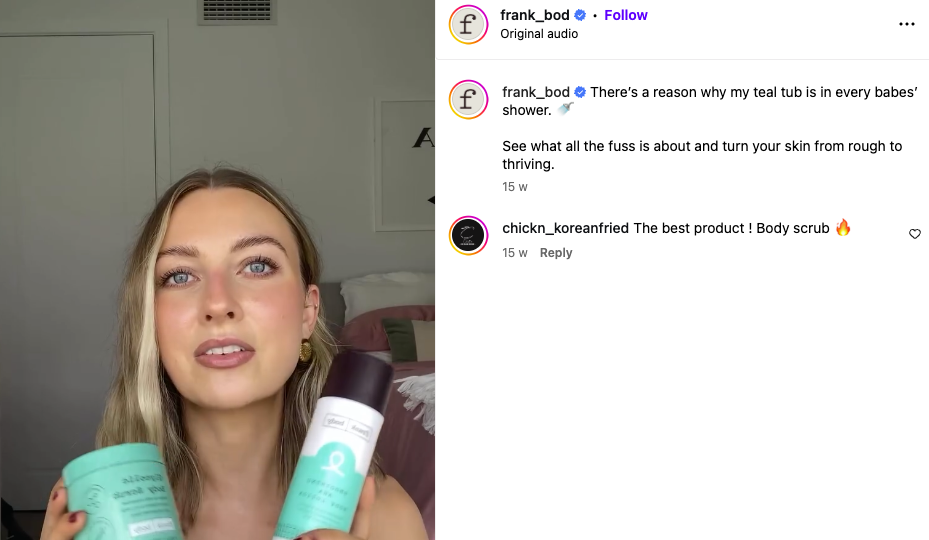
Format: UGC + Influencer
Platform: Instagram
Industry: Skincare (AUS)
Frank Body sent free products to micro-influencers and encouraged cheeky, on-brand UGC (“Get dirty with me” was a hit). The strategy helped the Aussie brand explode globally.
Why it worked:
It felt like a movement—not a campaign.
Takeaway:
Build a brand community, not just an audience. Let your tone of voice shine. Frank Body is proof that personality drives loyalty.
Cross-channel / Multi-touch campaigns
14. Domino’s Australia – TikTok + app integration
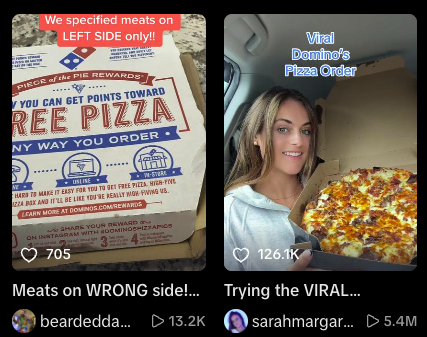
Format: Cross-platform funnel
Platform: TikTok and Dominos app
Industry: Fast food
Domino’s ran TikTok promos encouraging users to design their dream pizza in the app. They gamified it, ran contests, and drove traffic back to their mobile ordering experience.
Why it worked:
TikTok hype became real orders.
Takeaway:
Marry content and conversion. Social without a funnel is wasted attention. Use QR codes or deep links to push users from social into app flows.
15. The Iconic – Seamless omnichannel shopping
Format: Always-on marketing
Platform: Email, website, socials
Industry: Fashion eCommerce (AUS)
From influencer collabs to app-only discounts, retargeting ads to weekly emails, The Iconic builds a fully integrated shopping ecosystem.
Why it worked:
Customers feel seen across every channel—and every stage of the journey.
Takeaway:
Consistency across platforms = trust and conversion. Map your customer journey and plug the gaps between discovery, consideration, and purchase.
What do these digital marketing examples have in common?
Across TikTok trends, email flows, SEO blogs, and multi-channel brand launches, the most successful digital marketing campaigns share a distinct DNA. Here’s what ties them together:
- Emotional storytelling sticks
From Nike’s “You Can’t Stop Us” to Glossier’s UGC, every standout campaign tells a story that moves people. Whether it’s pride, humour, nostalgia, or urgency, emotional resonance is the anchor that drives engagement and shares. - Platform-native content that plays by the rules—and then breaks them
Duolingo’s chaotic TikToks and Tourism Australia’s cinematic YouTube ads both worked because they understood their platforms. They embraced native behaviours—like vertical video, first-person POV, comment threads—and layered in creative risk. - Trust built through real people, not polished ads
Influencers, UGC, and community content outperform traditional ads because they feel real. Campaigns like HelloFresh’s micro-influencer strategy show how smaller creators can drive deeper connections and higher ROI.According to Statista, 63% of Australian marketers say influencer marketing delivers better returns than other digital channels. - Data-led creative that starts with insight, not guesswork
Whether it’s Samsonite tailoring SEM copy to match user intent or Domain localising blog content for different suburbs, the best campaigns start with data.Australian businesses that align their creative with search behaviour, customer pain points, or seasonal trends see stronger conversion rates and organic reach. - Creative bravery backed by ongoing experimentation
Every great campaign takes a risk—whether that’s an unexpected visual, a cheeky tone of voice, or a new format. But these risks are informed by tests, not assumptions.The brands winning today are the ones who measure what matters and keep iterating.
High-performing campaigns aren’t flukes—they’re the result of balancing audience insight, creative execution, and performance optimisation.
If you’re an Australian brand or marketer, the playbook is clear: Be bold, be strategic, and build trust at every touchpoint.
Want a campaign like this? Let’s talk.
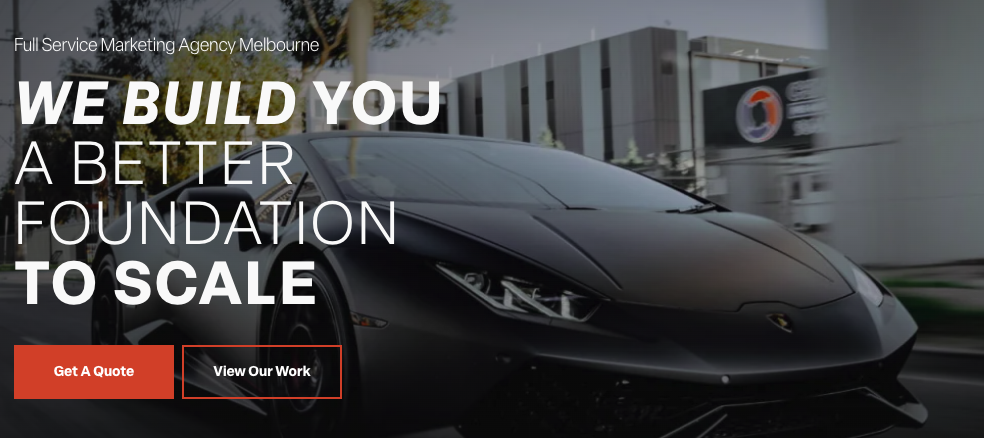
At Bez, we’re a full-service digital marketing agency with national reach and cross-sector experience.
We blend creative-first thinking with fast, strategic execution to deliver campaigns that cut through noise and convert.
Ready to build your next digital marketing success story? Book a call or explore our services today.
FAQ
What is an example of a digital marketing campaign?
A digital marketing campaign is a strategic online initiative designed to promote a brand, product, or service through digital channels.
For example, Duolingo’s TikTok campaign used humorous, platform-native videos to grow its Gen Z user base, resulting in a 2000% increase in followers and app downloads. In Australia, Tourism Australia’s “Come and Say G’day” combined high-end video production with global social promotion to revive post-COVID travel interest.
What are the most effective digital marketing channels?
The most effective digital marketing channels include search engine optimisation (SEO), social media, email marketing, content marketing, and paid ads. Their success depends on your audience and goals. In Australia, social media platforms like Instagram and TikTok are powerful for brand awareness, while SEO and Google Ads remain top performers for driving leads and local traffic.
What is SEO in digital marketing?
SEO (Search Engine Optimisation) in digital marketing is the process of improving your website’s visibility in search engines like Google. It involves optimising content, keywords, site speed, and technical structure to rank higher in search results. SEO helps businesses attract organic traffic, build trust, and connect with high-intent customers—especially important for local Australian businesses competing in crowded markets.
What is the role of a digital marketing agency?
A digital marketing agency helps businesses plan, execute, and optimise their online marketing campaigns across multiple channels. Services often include strategy, SEO, content creation, paid ads, email marketing, and social media management. For Australian brands, a full-service agency like Bez provides both creative and data-driven support to grow awareness, traffic, and conversions in competitive industries.